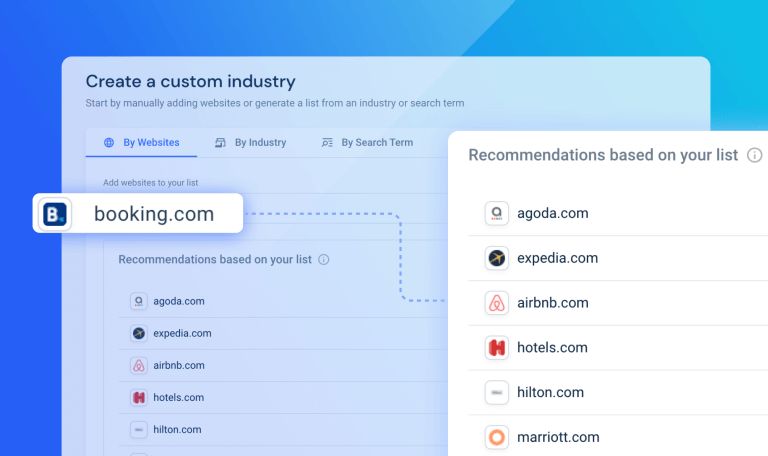Optimize Your Digital Strategy for Remote Work

The rise of remote work has seen a staggering increase of 159% in the past 12 years, which has consistently altered every company’s digital strategy. Given the direction that 2020 has taken towards digitization and socially distanced labor, we can only expect that number to increase in the future.
Additionally, today’s accessibility of technology has placed an increased value on the ability for jobs to remain functional in any situation. This, of course, has shifted the mindset of remote employment to the forefront of many job seekers’ minds. However, the necessity of working from home has brought on new sets of issues and challenges that many businesses are working to resolve in various degrees of success.
This article will address some prominent challenges of remote work, such as a business’s online presence, internal communication, and collaboration, as well as “workplace” time management.
Be Seen: Online Presence
The strongest assets for any company and its workers are the internet and technological devices. The internet is doubly important considering that it not only enables remote functionality but also enables potential customers and clients to find your service or product from anywhere in the world. Ultimately, this gives remote functionality both internal and external value to a business’s existence.
Most businesses have a website that provides consumers with greater access to information on the company and its products or services. A major issue, however, is that a surprising number of businesses believe that once a website is set up, there isn’t much else that needs to be done to drive their online presence—aside from perhaps managing social media.
This mentality typically creates a negative impact on your website’s traffic, engagement, and conversion rates. In some cases, it can be even more detrimental to your business than having no website at all. A website that is poorly designed and not optimized is likely to actually drive potential customers away and towards competitors instead. Some analysts have found that websites only have about 15 seconds to capture a visitor’s attention before moving off the site and have appropriately dubbed it as the “15-second rule.” The 15-second rule goes right alongside a measurement known as bounce rate, which is based on how often website visitors immediately leave your website after clicking into it.
Competitive Analysis: Comparing bounce rates according to marketing channels
Optimizing a business’s website is important regardless of whether or not the business offers a product or a service—especially in the scope of remote work. Just as physical stores are expected to keep the workspace tidy, neat, and efficient, the online workplace presence needs the same attention. After all, a website is a form of real estate, and it needs to be treated as such. When the physical location isn’t accessible due to time conflicts, location accessibility, or unforeseen circumstances, the online location needs to be easily accessible and maneuverable.
The optimization of a website should be a focal point of any business’s digital strategy, even for companies whose employees are not operating in remote work positions. A great starting point to consider in optimizing a website is to gather data on the visit and bounce rates of your website. Then, you can compare those rates to your competitors’ websites and see which components are executed differently, and can be utilized and highlighted by your website.
Let’s Talk: Communication
A priority for a business’ digital strategy and its ability to function, especially in remote environments, is communication. Two major enablers of internal corporate communication that have gained significant traction in recent months are Slack and Zoom. Slack is a text-based messenger platform that allows teams to communicate similarly to text messaging. Thanks to synchronization between the mobile and computer apps that work in the background of the platform, it operates much more conveniently in the workplace than traditional text messaging.
The application significantly speeds up the process of adding members to new groups and teams while even allowing users to add customizable emojis to their messaging. Rather than tracking down colleagues across the workplace to ask questions or sending emails to schedule meetings, users can shoot a quick message to others, regardless of location and without disrupting anybody’s workflow. Zoom, on the other hand, is a video conferencing software that can enable large teams, up to 100 individuals for the free version and up to 1,000 individuals with the “Enterprise Plus” plan, to simultaneously meet in a virtual space.
This application offers the ability to have “green screen” backgrounds to enable professional atmospheres regardless of the actual location. This ability can cut down background distractions, especially if you live with others or have a pet.
Zoom is perhaps the best alternative to having everyone physically gathered together for a meeting. Video conferences enable employees to see each other, which can aid remote work by limiting the isolated sentiments of working from home. There’s the option for users to share their screen with the rest of the group, allowing all participants to follow along with the speaker when reviewing digital records.
While it’s great to use Zoom frequently to recreate the face-to-face office atmosphere, too much time spent in video conferences can take up precious time during the workday, and can even be particularly draining, which some people refer to as “Zoom fatigue.” However, combating it is very easy and can be solved by simply taking multiple short breaks throughout the day away from phones and computer screens are all that’s needed.
Aside from “Zoom fatigue” and the possibility of losing time during the workday from attending too many meetings, there are very few downsides to using Zoom. The benefits of effectively using Zoom, however, such as stronger communication and employee connection, improved collaboration through the ability to share screens, and the ease of accessibility of Zoom, definitely outweigh the few cons.
Work Together: Collaboration
Lastly, businesses implementing remote work environments should evaluate employee collaboration on projects as if they were in the office. While communication platforms such as Slack and Zoom definitely help collaboration efforts, they are nowhere near a conclusive solution for large-scale projects. Applications that allow multiple employees to work on the same documents, or handle the same data at the same time are what best enables remote work collaboration.
Some programs are developed specifically with this idea in mind and utilize cloud technology to best achieve this result. Perhaps the most well-known program that uses cloud technology is Google Drive, with its suite of presentations, spreadsheets, documents, image creation, and sharing capabilities. Google Drive is often considered by businesses due to its universality, cost efficiency, and ease of use with a wide variety of security solutions.
Cloud computing was designed with a focus on accessibility so that the data could be interacted with from any location with internet access and across many different devices. This becomes particularly valuable across operating systems such as Windows, Android, and Apple. Instead of requiring users to convert files across different operating systems, most cloud applications simply host the data in a singular format that is accessible to each major operating system. Not only does cloud computing allow greater flexibility and accessibility from physical locations, but it also facilitates flexibility and accessibility from digital locations as well.

Arguably, the most compatible solution to this issue is intelligent document processing software which adopts artificial intelligence technology to recognize text and data that other word processors typically cannot. This type of software can then extract the data and compile it into usable forms significantly faster and at a near-zero error rate. Reducing the error rate and time commitment needed to extract data from PDFs and converting it into a usable form can improve employees’ productivity overall. Teams can reduce the amount of time spent on performing menial, and rather skill-less tasks, and in return, improve the collaborative ability of the team by providing wide-scale and quick access to important data.
Many intelligent document processing systems are simple enough to even use with older softwares and require little change to a business’s IT infrastructure. Best of all, in comparison to using automation programs that require some knowledge of programming, this type of codeless software incurs lower training expenses because they require very little background knowledge of programming and system operation.
A WFH Future
It’s becoming more important for businesses to be able to accommodate remote work, and its role in the future is only going to increase. Therefore, it’s crucial to begin the digital revolution today by revamping your digital strategy. While this task may seem daunting, adopting some of the tips and suggestions from this article will provide your business with the insight necessary to optimize its ability to function in a remote work environment and begin embarking on the digital revolution.
Get ahead of game-changing consumer trends
Contact us to set up a call with a market research specialist











